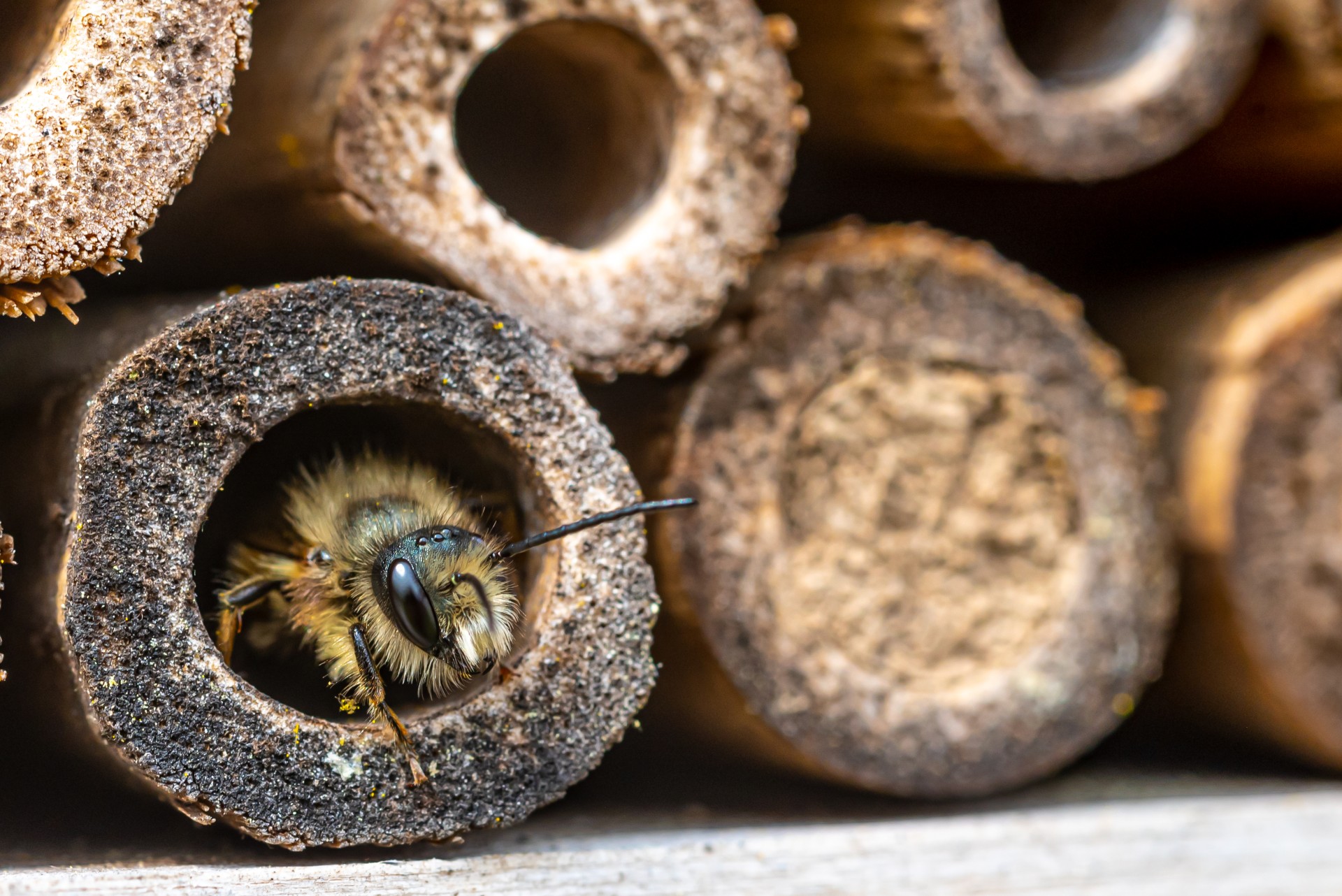There are more than 20,000 species of bees in the world. Approximately 4,000 are native to North America, and even more surprising is that only 10% of those bees are social, like bumblebees and honeybees. Around 90% of bees are solitary bees. Although movies like The Bee Movie portray honeybees as the primary pollinator, and although they are incredibly critical to the pollination process, solitary bee species play an indispensable role in plant pollination, keeping our crops and flowers thriving. The unfortunate news is that both social and solitary bee numbers are on the decline, and that is why bee awareness is on the rise.
Solitary Bees and Their Role in Pollination
When it comes to pollinating farms, orchards, and gardens, solitary bees get the job done. Solitary bees do not live in a colony with a queen and worker bees like honeybees. As the name suggests, solitary bees live independently. Most native bees to the United States have solitary nests and do not build hives or make honey. Instead, solitary bees are ground dwellings, which is why some native bees are often mistaken for wasps. However, it is important to know that solitary bees lay their eggs in the ground, decaying wood or plant stems. Solitary bees lay their eggs in little chambers in these locations.
The female solitary bees build a nest, collect nectar and pollen, and lay eggs without the help of other bees. Because solitary bees do not protect a queen or beehive, they are more friendly, gentle, and easier to observe in action. Beekeepers enjoy solitary bees because it truly allows a close-up experience, as solitary bees don't mind being held in your hand. Their main goal is to lay eggs and survive on their own.
Native Solitary Bees Critical to North American Native Plants
As it would suggest, native bees support the health of native plants. Native plants provide the necessary ecological balance to the soil, which keeps wildlife, plants, flowers, trees, and vegetables thriving. Examples of solitary bee species are carpenter bees, sweat bees, leaf cutter bees, and mason bees. All these species are pollinator generalists and pollinate the greatest variety of fruits, vegetables, and flowers.
Mason bees got their name from the nests they create from clay. They have become essential crop pollinators for fruits and nuts and are used in commercial farming today. Mining bees and digger bees are only able to forage close to their nesting area, so they are more limited in their scope of pollination opportunities. All bee species travel to forage, some further than others.
Solitary Bee Characteristics
There are some characteristics unique to solitary bees that set them apart from social bees like bumblebees and honeybees. Solitary bees often do not have a stinger at all, but the 30% that do will protect their nest if threatened. Solitary bees can be held and are easy to raise for beekeepers. A significant difference between solitary bees and social bees is how they gather pollen. Honeybees gently collect pollen on their bodies, mix it with saliva, and store it on their legs. Solitary bees are more effective at spreading pollen, even though they are a bit clumsier at the task. Solitary bees flop their bodies on flowers, which loosens pollen, and more pollen spreads. Solitary bees’ life span is about one year, and most of that time is spent building their nest and laying eggs.

Get help with your beehive or bee swarm removal! Call Today 760-224-3040 Or 951-265-8292!
Solitary and Social Bees Need Our Help
Most of the bee awareness efforts out there are focused on social bee species like honeybees, but native solitary bees need our help, too. Solitary bees face the same threats of habitat loss, disease, species competition, and pesticide use as do honeybees. Climate changes are impacting solitary bee nests, and there are some things that everyone can do to help bees.
- Do not use pesticides on your lawn – some landscapers and gardeners may use pesticides to help get rid of pest problems, but this is detrimental to bees.
- Do not remove a hive on your own or try to kill the bees – if you have a bee problem, contact a live, humane bee removal company to remove and relocate the hive safely.
- Plant native plants – find out what is native to your area and plant some flowering plants that bees can easily forage.
- Be aware that solitary bees often build their nests in the ground.
- Share what you know with others and bring awareness about bees and how to help.
Whether solitary or social bees, they deserve our respect for what they collectively contribute to the pollination process. Beekeepers across America join to provide safe havens for bees to thrive. If you have any questions about bees or need a beehive removed, please get in touch with D-Tek today for a free inspection!
